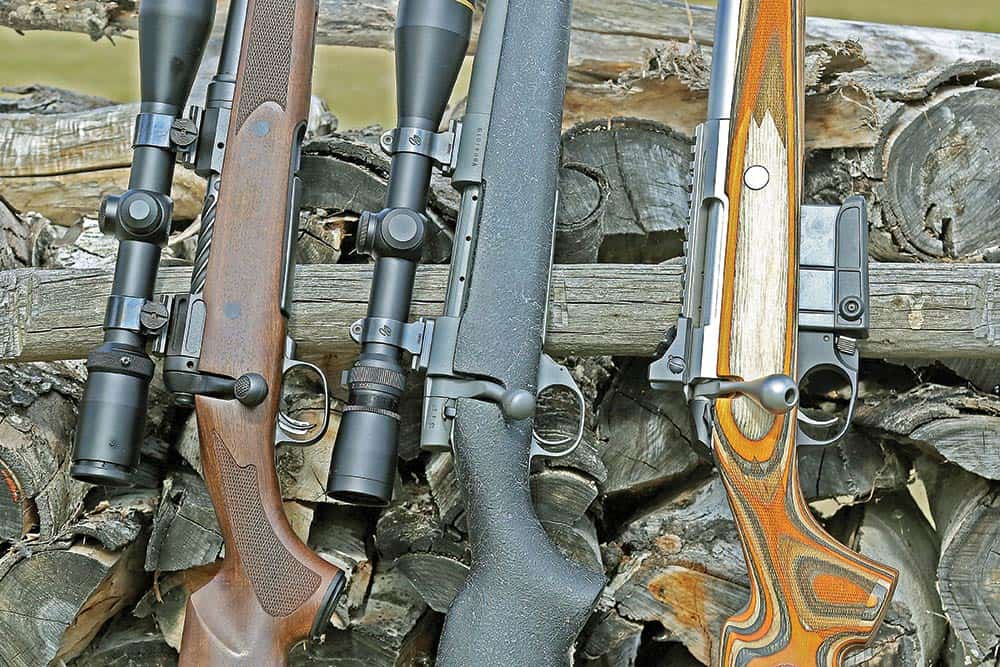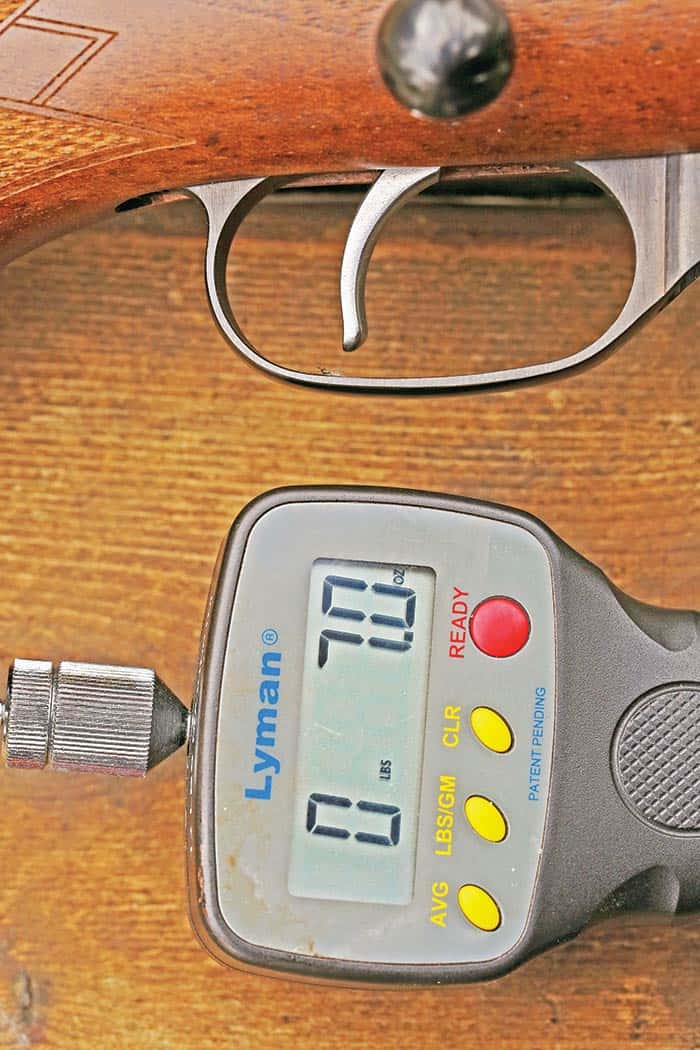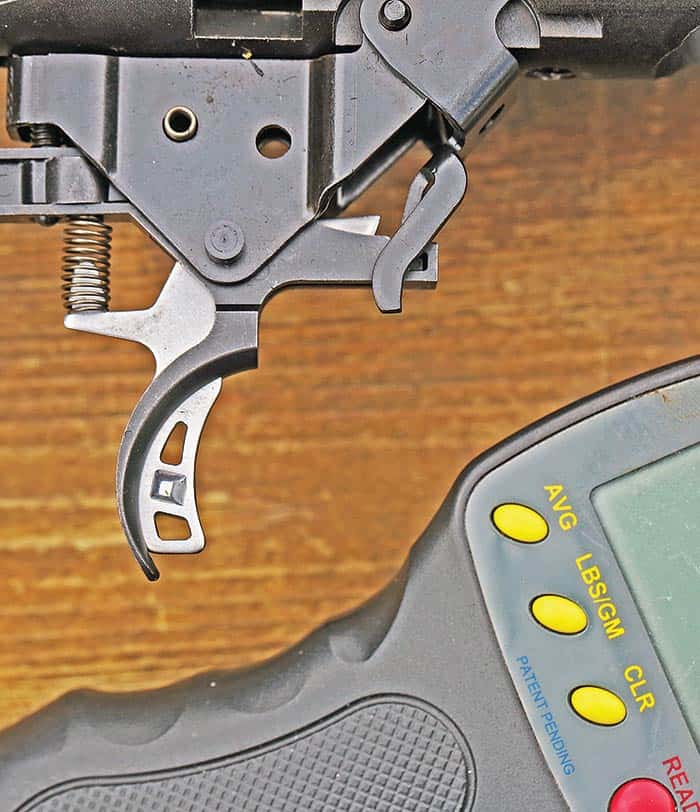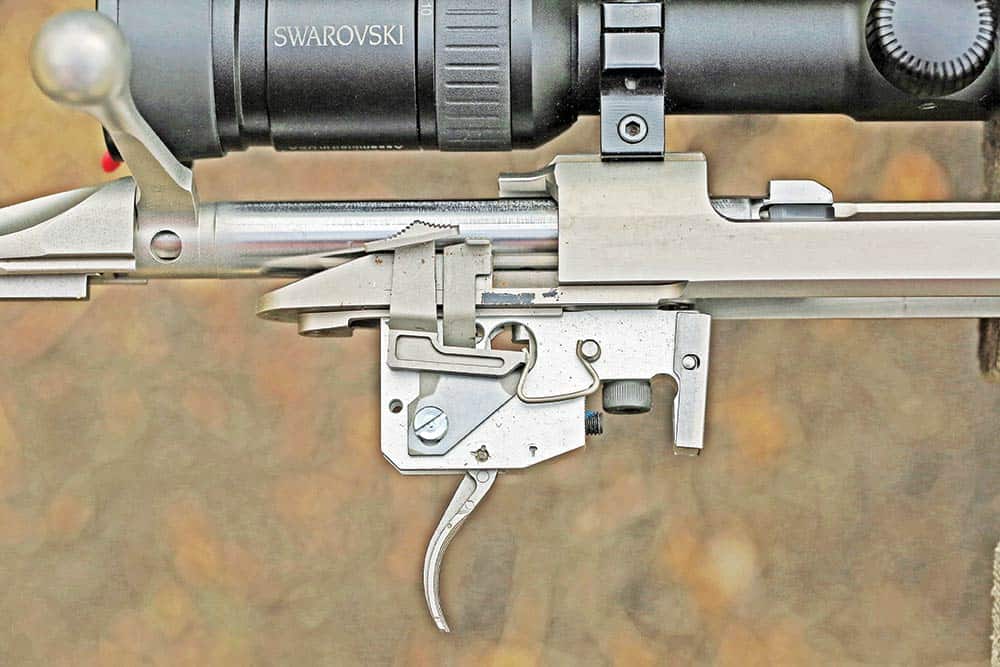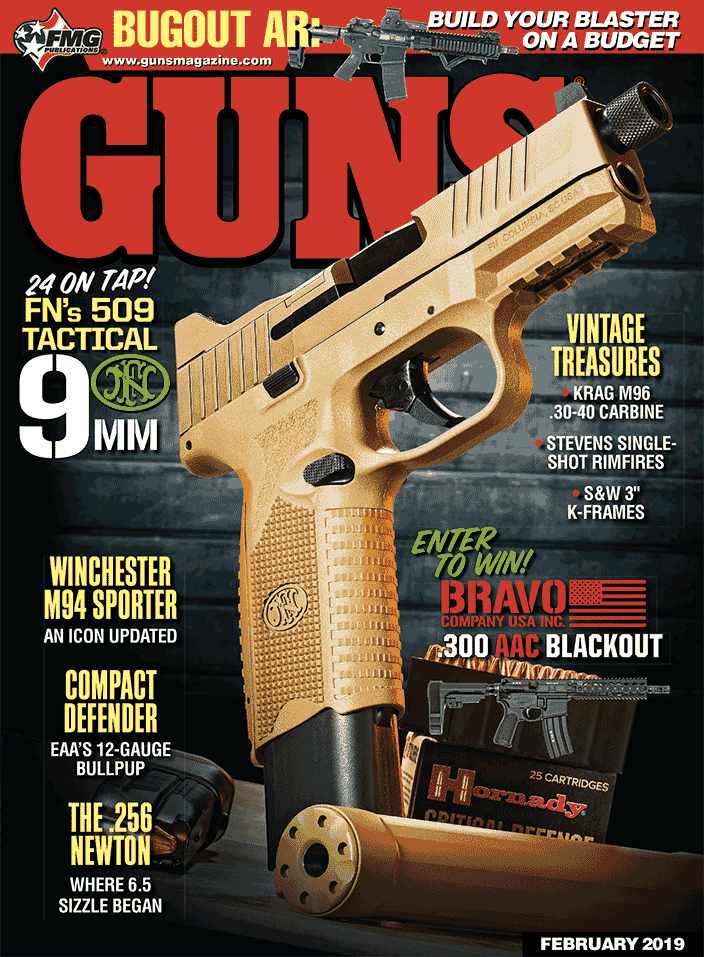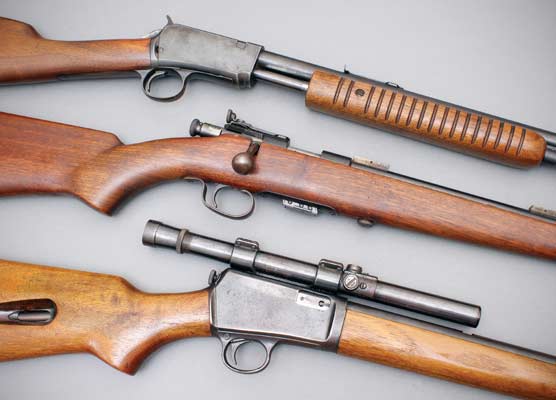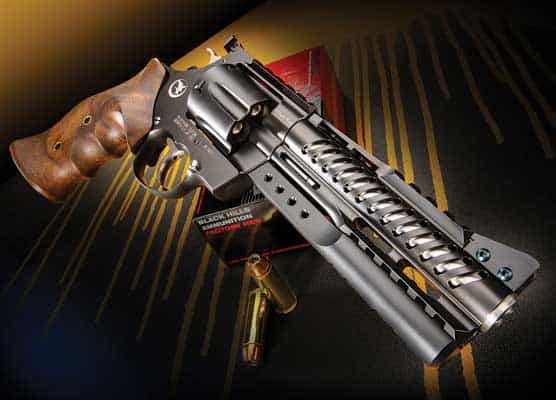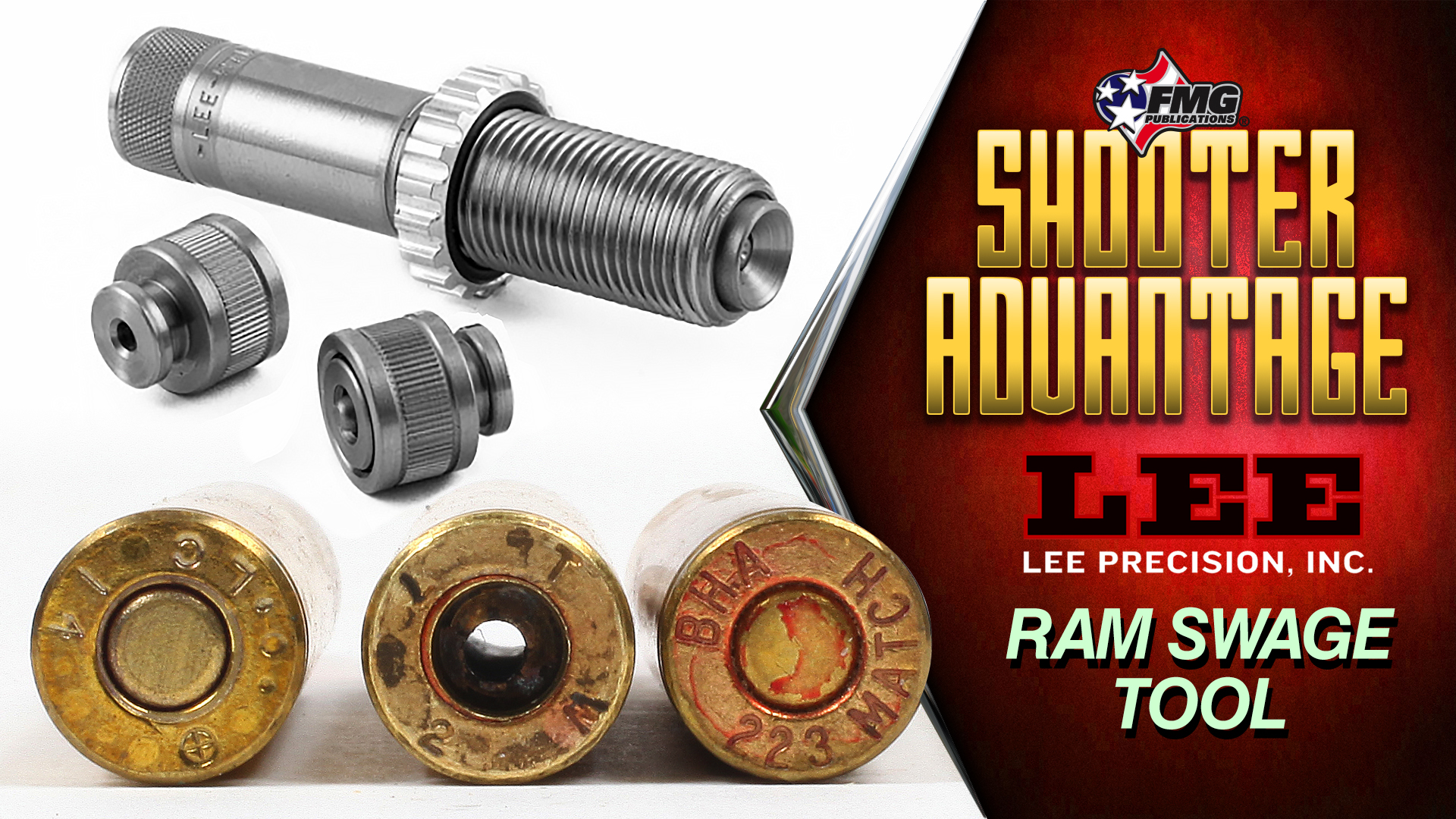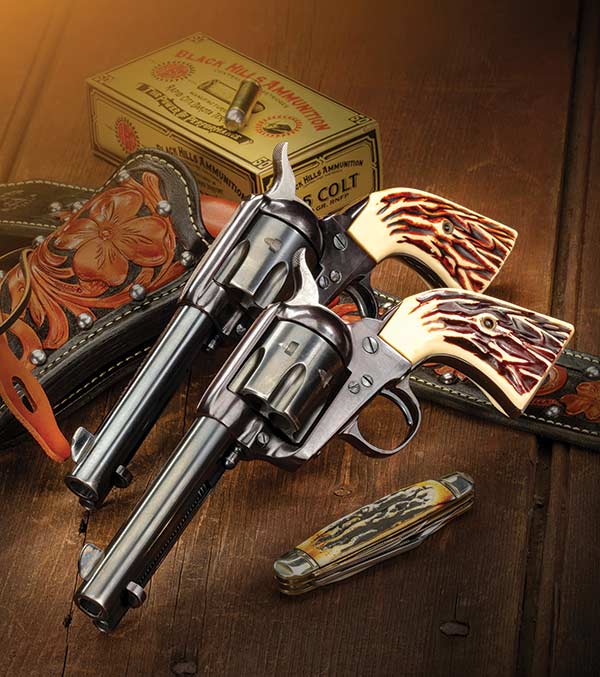Triggering A TurnAround
Left to right: The Savage Lightweight Hunter is outfitted with an AccuTrigger that has a safe, crisp break under 2½ lbs. The Weatherby Vanguard has an exceptional 2-stage trigger as does the Tikka T3 Arctic Ranger.
In the 60+ years I’ve been shooting (hey, I started at a single-digit age) triggers on sporting rifles have gone from pretty good, to adequate, to abysmal.
From the 1970s and into the opening years of the 21st Century I took it for granted a new rifle would need — at the very least — a trigger job if not a replacement trigger. My Dad’s old Savage pump .22 made in 1916 has a much better trigger than most new factory rifles.
It was just something figured into the cost of a new rifle. “Product liability” was the usual explanation for it and certainly it was a legitimate concern. Maybe I’m just getting old and cynical but I think the lawyerly explanation sometimes got overused.
Admittedly I’m painting with too broad a brush. Some manufacturers, even in those dark days, turned out rifles with decent triggers — Sako and Steyr, for example. Triggers on every Kimber I’ve owned or tested were well designed, well made and had a decent pull.
A Winchester Model 70 Classic .375 H&H made in about 1996 had a beautiful clean pull a little over 2 lbs., a little lighter than I like on a big game rifle. This one stands out as the only rifle I can recall owning where I adjusted the trigger to a heavier pull weight.
I’m sure every experienced rifle shooter can relate both good and bad stories from the era but in my experience there were more bad than good.
A basic principle of getting old is the belief nothing is as good as it used to be. I often think so myself. If I’m being honest, probably the main thing “not as good as it used to be” is me. But, in reality, many things are better than they used to be, among them triggers on factory rifles — something no one would have predicted back in the year 2000.
Rifle triggers today, even among the so-called “value priced” models, are at least adequate but often very good to excellent. Overall, we’ve never had it so good. It gives me hope for the future.
The main beneficiaries of better factory triggers are regular hunters and shooters who use the rifles just as they come “out of the box.” Hardcore shooting enthusiasts and gun writers sometimes forget not everyone plans on tuning or replacing the trigger. Young people today expect if they buy a vehicle, a chain saw, or a rifle, they can put it to use without a lot of tinkering first. Seems crazy to my generation, but there it is.
The trigger on Dave’s CZ-527 carbine in 7.62×39 can be used as a conventional single-stage pull or pushed forward to “set” mode which breaks with 7 oz. of pressure.
This Savage AccuTrigger came factory-adjusted for a 3-lb. pull. The center blade prevents the rifle from discharging if dropped or subjected to a severe blow.
Hope Appears
The turnaround began early in this century. I consider Ron Coburn (Savage CEO from 1988 to 2013) one of the most brilliant and influential figures in the firearms industry. Under his direction a very talented design team developed the AccuTrigger, proving it was possible to offer a safe, reliable and quality trigger out of the box at a reasonable cost.
The Tikka T3 — also introduced early in this century — was another influential design. Out-of-the-box T3’s had an excellent trigger, crisp, clean and consistent. The rifles quickly earned a reputation for exceptional accuracy. Although the barrels and bedding got most of the credit, the quality trigger played an important role.
Competition among manufacturers is a marvelous thing. As it became clear hunters and shooters appreciated a quality trigger pull and made it an important factor in selecting a rifle, manufacturers responded.
A surprising development, one I like very much, is increased interest in 2-stage triggers. Personally I like 2-stage triggers, probably as the result of years of competitive handgun shooting. Most semi-auto pistols (such as my favorite 1911’s) have a small amount of take-up or trigger slack (in effect, a 2-stage system). I like to “prep” the trigger by taking up the slack then pressing to fire the pistol. Although it works fine for deliberate slow fire, with training the prep/press sequence can be done very quickly.
The trigger of Dave’s Sako 85 Finnlight is beautifully crisp. He set it to break at just under 2-½ lbs.
Dave backed the lower screw out a bit to lighten the pull and set it with a bit of thread-locking compound on this Kimber 6.5 Creedmoor Adirondack.
A Few Faves
Some of my favorite rifles including my Steyr Scout, Sako TRG-42 and Tikka Arctic Ranger have 2-stage pulls. The Weatherby Vanguard is one of the best performing rifles available and are invariably superbly accurate. The original single-stage trigger was not a bad design and Weatherby took pains to tune them for a decent pull. Still, I felt the trigger was the weakest part of an otherwise superb rifle.
Ed Weatherby, another highly respected figure in the firearms industry, introduced improvements to the Vanguard line. One of most significant was a really good 2-stage trigger. Making changes to its bread-and-butter line was a bold move by Weatherby and made an already popular rifle even more successful.
One of the few benefits of aging is the freedom to be a curmudgeon, exalting the past and deploring the present. Well, it’s true. The world is going to hell in a hand basket! But if triggers can recover their former quality — and, in fact, get even better, maybe the world can too!
